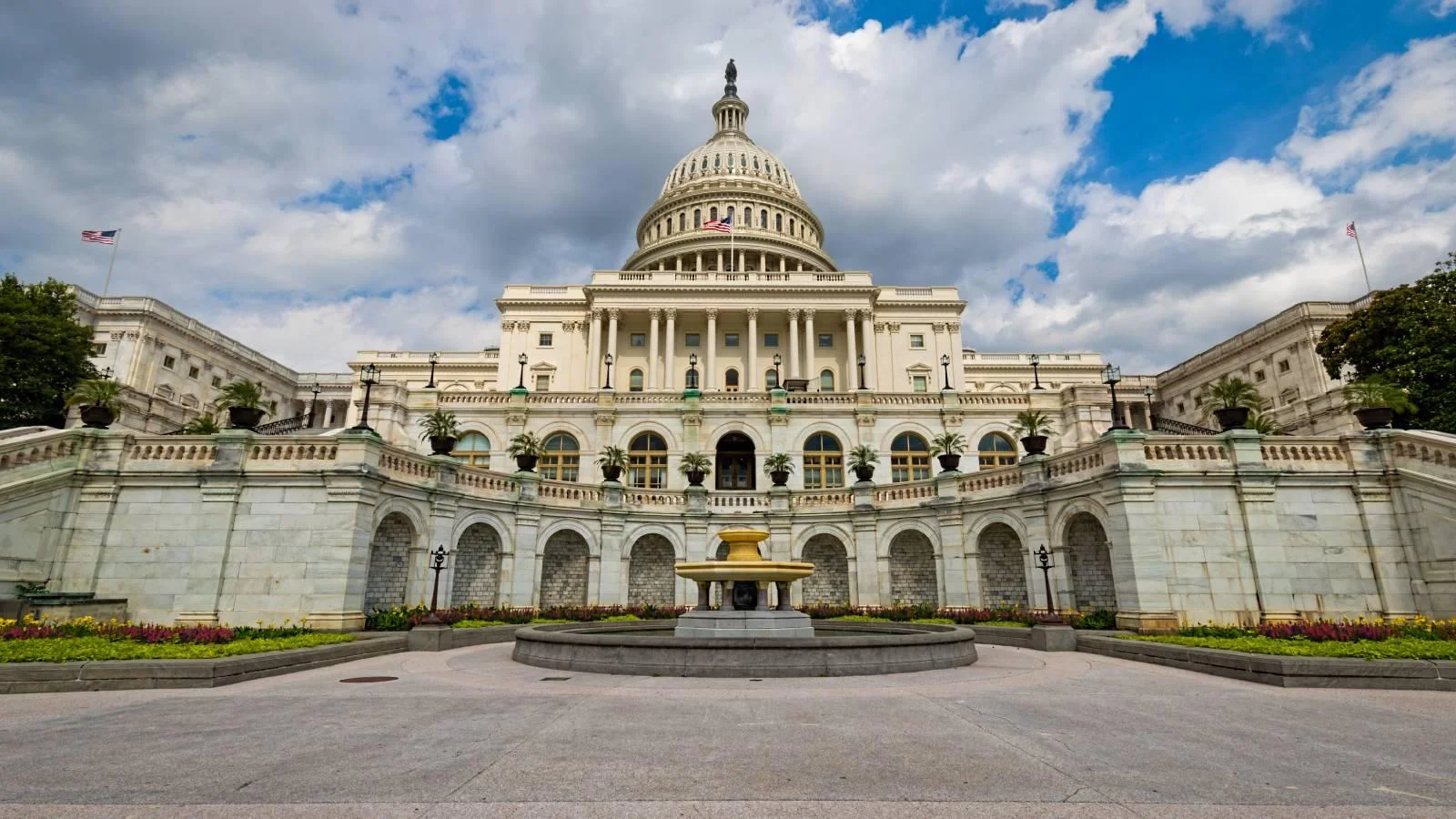The Congressional Record is a unique source of public documentation. It started in 1873, documenting nearly all the major and minor policies being discussed and debated.
“STATEMENTS ON INTRODUCED BILLS AND JOINT RESOLUTIONS” mentioning the U.S. Dept. of Commerce was published in the Senate section on pages S9940-S9941 on Sept. 3, 1998.
The publication is reproduced in full below:
STATEMENTS ON INTRODUCED BILLS AND JOINT RESOLUTIONS
By Mr. REED (for himself, Mr. D'Amato, Mr. Inouye, Mr. Kerry, Mr.
Torricelli, and Mr. Dodd):
S. 2436. A bill to require that jewelry imported from another country be indelibly marked with the country of origin; to the Committee on Finance.
legislation requiring marking of imported jewelry
Mr. REED. Mr. President, today, I am introducing legislation to require permanent country of origin markings on most imported fashion or ``costume'' jewelry products. I am joined in this effort by Senator D'Amato, who founded the Senate Jewelry Task Force with me, as well as Senators Inouye, Kerry, Torricelli, and Dodd, who I would like to thank for their strong support of the 16,200 Americans employed by our nation's fashion jewelry manufacturers.
Like many sectors of our nation's economy, domestic fashion jewelry manufacturers are all too familiar with the pressures of the new global economy. And, for many years, little attention was paid to the industry by our trade negotiators and other officials. Today, that is changing: The Commerce Department is working with our fashion jewelry makers and has undertaken a competitiveness study of the industry, and our trade negotiators now recognize the needs of America's jewelry manufacturers when they sit down with our trading partners.
Yet, the industry still faces an uphill battle against low-wage importers, who do not have to abide by appropriate environmental standards and other important U.S. laws. For that reason, we are introducing this legislation to require a permanent country of origin label on imported fashion jewelry products so American consumers know where it was made. This is the same labeling requirement we see on thousands of imported products from televisions to tennis shoes. Unfortunately, the current marking requirement for jewelry imports is a hanging tag or sticker, which can be removed, fall-off, or be obscured by price tags.
Consumers deserve better, and this legislation allows them to make an informed choice, in light of the $524 million worth of fashion jewelry imported in 1995 alone. Our bill is modeled on the current permanent marking requirement for imported Native American style jewelry products, and it is endorsed by the nation's largest jewelry trade organizations such as the Manufacturing Jewelers and Silversmiths of America and the Jewelers of America.
Mr. President, imported jewelry is a fact of our international economy, but consumers have a right to know where a product is made and hard working American jewelry makers have a right to a level playing field. I encourage my colleagues to support this legislation, and I look forward to its consideration by the Senate.
Mr. President, I ask unanimous consent that the full text of the legislation be printed in the Record.
There being no objection, the bill was ordered to be printed in the Record, as follows:
S. 2436
Be it enacted by the Senate and House of Representatives of the United States of America in Congress assembled,
SECTION 1. MARKING OF IMPORTED JEWELRY.
(a) Marking Requirement.--By no later than the date that is 1 year after the date of enactment of this Act, the Secretary of the Treasury shall prescribe and implement regulations that require that all jewelry described in subsection (b) that enters the customs territory of the United States have the English name of the country of origin indelibly marked in a conspicuous place on such jewelry by cutting, die-sinking, engraving, stamping, or some other permanent method. The exceptions from marking requirements provided in section 304 of the Tariff Act of 1930 (19 U.S.C. 1304) shall not apply to jewelry described in this section.
(b) Jewelry.--The jewelry described in this subsection means any article described in heading 7117 of the Harmonized Tariff Schedule of the United States.
(c) Definition.--As used in this section, the term ``enters the customs territory of the United States'' means enters, or is withdrawn from warehouse for consumption, in the customs territory of the United States.
Mr. D'AMATO. Mr. President, today along with my colleague Mr. Reed of Rhode Island I introduce legislation that will require country of origin marking on imported costume jewelry in order to better inform American consumers about the country of origin of their costume jewelry purchases.
The jewelry industry in the U.S. consisted of more than 3500 companies and 55,000 American workers in 1994, with sales totaling in the billions of dollars annually. In 1977 imports of costume and fine jewelry were about 14% of the jewelry sales in the U.S. By 1994 the imported costume jewelry sales reached 26% of all costume jewelry sales, and 50% of all fine jewelry sales. This increase in imports led to a decline in employment in the U.S. jewelry manufacturing industry by 26%. Of course we all favor the advantages that come from foreign competition in the marketplace. And we also favor informed consumers.
Currently, imported jewelry is one of the few products that does not require a country of origin stamp. This bill will require imported costume jewelry to be stamped in English with the country of origin. This eliminates the problem of removal or loss of adhesive labels or tags that state the country of origin prior to reaching the retail store. In this way we respect the integrity of our American workers by removing any question as to the origin of any costume jewelry purchases. This bill is a reasonable and low-cost response that extends the country of origin marking law to cover a product that should be included.
With the increasing wealth of our country, the sales of jewelry are increasing and those who wish to know the country of manufacture of their jewelry will be easily satisfied by a simple stamp or imprint on these items. This jewelry should be subject to same rules as all other imports. The industry trade group, The Manufacturers, Jewelers, and Silversmiths of America, also support this bill. I urge my colleagues to support this bill as well.
______
By Mr. REED:
S. 2437. A bill to require that jewelry boxes imported from another country be indelibly marked with the country of origin; to the Committee on Finance.
Legislation Requiring Marking of Imported Jewelry Boxes
Mr. REED. Mr. President, today I am introducing legislation at the request of Rhode Island's jewelry box manufacturers to require a permanent country of origin marking on imported jewelry boxes.
This bill is similar to another piece of legislation I am introducing today to require a permanent country of origin label on imported fashion jewelry items, and it is my hope that this jewelry box bill will be considered in tandem with that legislation.
Mr. President, I ask unanimous consent that the full text of this legislation be printed in the record I urge my colleagues to support this bill.
There being no objection, the bill was ordered to be printed in the Record, as follows:
S. 2437
Be it enacted by the Senate and House of Representatives of the United States of America in Congress assembled,
SECTION 1. MARKING OF IMPORTED JEWELRY BOXES.
(a) Marking Requirement.--By no later than the date that is 1 year after the date of enactment of this Act, the Secretary of the Treasury shall prescribe and implement regulations that require that all jewelry boxes described in subsection
(b) that enter, or are withdrawn from warehouse for consumption, in the customs territory of the United States have the English name of the country of origin indelibly marked in a conspicuous place on such jewelry boxes by cutting, die-sinking, engraving, stamping, or some other permanent method. The exceptions from marking requirements provided in section 304 of the Tariff Act of 1930 (19 U.S.C. 1304) shall not apply to jewelry boxes subject to this section.
(b) Jewelry.--The jewelry boxes referred to in subsection
(a) are jewelry boxes provided for in headings 4202.92.60, 4202.92.90, and 4202.99.10 of the Harmonized Tariff Schedule of the United States.
____________________









